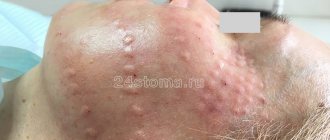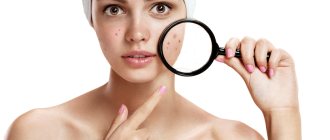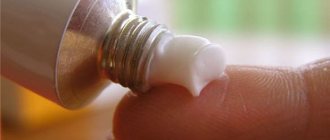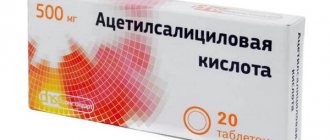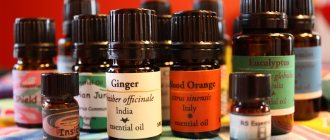Almost 80 percent of teenage children and young people under 30 suffer from acne vulgaris. Most patients experience subsidence of the disease before the age of 30, and some have to fight it throughout their lives. The main symptoms of acne are:
- increased proliferation and clogged pores,
- increased level of sebum secretion,
- presence of rashes,
- inflammation on the skin.
It is almost impossible to choose standard methods of treating the disease, because new research on this topic is emerging. Hormonal treatment methods are widely used and are used even in the most difficult situations. In order to cope with the disease, the patient's hormonal status is studied.
How does acne form?
Acne is a disease of the follicles. During this disease, very strong production of sebum occurs, the formation of rashes and biofilms, the formation of colonies and the appearance of inflammation on the skin. The first and most obvious symptom of the disease is the appearance of microcomedones. It has not yet been precisely established by what principle they are formed.
In those people who are predisposed to acne, the sebaceous glands are large. They begin to form in adolescence. The following types of hormones are involved in the formation of acne:
- androgens
This type of hormone is one of the most important for the secretion of sebum in our body. During the period of growing up, they allow the production of as much sebum as possible, which is the reason why acne appears in adolescents and adults of both sexes.
- estrogens
High levels of these hormones negatively affect sebum production. The sebaceous glands become smaller. Their increase can even at the genetic level affect the regulation of the sebaceous gland.
- progesterone
This type of hormone converts testosterone into the more powerful hormone DHT.
- insulin and insulin-like growth factor 1
It accelerates the growth of sebaceous gland activity. This has already been proven through numerous studies. It greatly affects the functioning of the adrenal glands.
- corticotropin-releasing factor (CRF)
Thanks to it, accessibility to the sebaceous glands is formed, which are its main purpose.
- adrenocorticotropic hormone (ACTH)
Participates in the formation of large amounts of cortisol.
- melanocortin
Regulates sebocyte differentiation and lipogenesis.
- glucocorticoids
Affect the formation of numerous inflammations.
- a growth hormone
Takes part in the differentiation of sebocytes and increases the rate of conversion of testosterone to DHT.
How to take birth control
The nature and rules for taking COCs are specified in the instructions for the drug. This information can also be obtained from your doctor.
As a rule, the package includes a blister of 21 tablets, but there are exceptions. Taking the drug should begin at the start of menstruation and continue daily until the tablets run out. Afterwards, it is important to take a break for 7 days and resume taking it again.
If a dose is missed for some reason, you should immediately take the pill.
For more reliable protection against pregnancy, you need to use condoms.
Analysis of the endocrine status of patients
It is not necessary to evaluate patients’ hormonal disorders only in two cases:
- acne exacerbation goes away in the shortest possible time,
- Standard treatment methods work for the patient.
Assessment of endocrine status is important and is carried out:
- when the acne problem begins after a person reaches 30 years of age,
- acne cannot be treated with conventional methods,
- acne before puberty,
- acne before menstruation,
- increased levels of the androgen hormone,
- increased testosterone levels,
- obesity,
- location of rashes. If they are located in the chin area, then the reason lies in hormonal disorders.
Hyperandrogenism manifests itself under the influence of the following factors:
- ovarian. The causes of its appearance include: PCOS and ovarian tumors. They can be benign or malignant.
- adrenal. The reasons for the appearance of this factor are: adrenal hyperplasia, which is divided into congenital and acquired, and an adrenal tumor, which can be benign or malignant.
In about 90 percent of cases, PCOS is the cause. It causes a variety of endocrine diseases in women. In this case, cysts may even form. One of the signs that is detected by ultrasound is polycystic ovary syndrome. The disorders are also accompanied by anovulation.
For patients who experience an increase in androgen levels without menstrual irregularities, tests and examinations are carried out in the first half of the menstrual cycle. If another hormonal therapy is already being used, then to determine the new hormonal status, it is important to stop taking oral contraceptives and medications that are used as part of it one month before the tests and procedures. This will eliminate the possibility of false or incorrect results.
The following indicators are taken into account:
- indicators of testosterone levels, which can be total and free.
- androstenedione. Samples taken early in the morning are ideal for analysis.
- DHEA,
- SHBG,
- Prolactin. If it is elevated, the causes may be either hypothalamic or pituitary,
- 17-hydroxyprogesterone,
- Luteinizing hormone
- Insulin. Its level is measured both on an empty stomach and after the patient has eaten.
- Cortisol. If it is elevated, then this is a sign of adrenal neoplasia.
How to choose the right birth control pills
In no case is it recommended to choose and start a course of taking contraceptives on your own. This should only be done by a doctor.
Before prescribing a contraceptive method, the specialist collects the patient’s medical history, takes into account the presence of any diseases in the present or future and pays attention to the individual characteristics of the body.
The next stage is a complete examination of the woman, the doctor evaluates the constitution, body weight, skin condition and blood pressure level. Additionally, he prescribes instrumental and laboratory tests, it is especially important to conduct ultrasound and mammography.
Also, when choosing contraceptives, be sure to take into account:
- Breasts, their shape and structure.
- Type of hair growth on the genitals.
- Growth.
- Health status of skin and hair.
- Peculiarities of the flow of menstruation.
- Presence of chronic diseases.
Carrying out hormonal therapy
A sign that a person has an excess of androgens in the body is acne, characterized by:
- the presence of cysts,
- the appearance of nodules,
- the appearance of inflammatory rashes.
Hormonal treatment is indicated for women not only with elevated androgen levels, but with long periods of exacerbation of acne and in cases where the disease is at a late stage. It is also used for patients who are unsuitable or contraindicated for other treatments. Some women choose hormone therapy as contraception. The main goals of hormone therapy are:
- reduction of increased secretion of androgens in the area of the adrenal glands, pituitary gland, ovaries,
- suppress androgen receptors in the sebaceous glands.
Acne experts in Europe recommend using hormonal therapy to treat the condition, along with antibiotics in severe or moderate cases.
Hormone therapy has a high level of effectiveness, and it does not matter whether elevated androgen levels are present or not. This method of treatment can be used either independently or in combination with other methods. It is often used in conjunction with:
- antibiotics,
- benzoyl peroxide,
- azelaic acid,
- retinoids.
In order to see the first positive results after using such therapy, at least three months must pass. Many patients experience improvements sooner. Three groups of drugs can be used in treatment:
- AR blockers,
- oral contraceptives,
- 3 glucocorticosteroids,
- enzyme inhibitors.
All drugs used in treatment have a high level of effectiveness. They have already proven themselves to be the best.
Sign up for a consultation
Make an appointment
DRUGS USED FOR TREATING ACNE (Part 2)
Preferanskaya Nina Germanovna Associate Professor, Department of Pharmacology, Faculty of Pharmacy, First Moscow State Medical University named after. THEM. Sechenova, Ph.D.
PRODUCTS FOR SYSTEMIC APPLICATION
Antibiotics are prescribed orally when a large area of skin is affected (face, back, shoulders, chest), when the clinical picture is dominated by pustules and when acne treatment with external means alone is ineffective. Treatment of acne with antibiotics is long-term. If treatment is insufficiently effective, repeated courses of antibiotic therapy are prescribed. However, it should be remembered that drugs from this group are not effective for acne caused by hormonal changes or malfunction of the sebaceous and sweat glands.
Antibiotics are used orally in combination with local therapy for moderate to severe acne. Antibacterial drugs are used orally in the form of tablets and capsules. For the treatment of acne, Minocycline and Doxycycline due to their high antimicrobial activity, rapid absorption and intensive accumulation in the sebaceous glands.
Important! Tetracycline preparations cause discoloration of teeth, enamel hypoplasia and impaired growth of skeletal bones of the fetus and child, so they should not be used in children under 8 years of age.
Doxycycline monohydrate (TN "Unidox Solutab" ) is prescribed orally in complex therapy for severe acne, using 100 mg per day for 6-12 weeks. Minocycline ( Minolexin ) is a semi-synthetic antibiotic from the tetracycline group, available in capsules of 50 and 100 mg. It is a highly effective drug for the treatment of moderate papulopustular inflammatory acne. When taken orally, the daily dose for children over 8 years of age is 4 mg/kg, then 2 mg/kg every 12 hours, for adults - 100–200 mg. Erythromycin 0.25 g and Josamycin are used orally 4 times a day for 10–14 days. Lincomycin ( Clindamycin, Tb. ) is used 0.124 g 1-2 times a day during or immediately after meals. Clindamycin is used every 6 hours until clinical effect is achieved. 450 mg, course of therapy - 2 weeks.
Important! Treatment of acne with systemic antibiotics involves long-term (at least a month) use. During this period, intestinal and vaginal dysbiosis and persistent adaptation of skin microflora may develop. Other complications from taking antibiotics include ulcerative lesions of the esophagus or stomach, softening of the nail plates (onycholysis), the appearance of hyperpigmentation on the skin and nails, etc. It is necessary to take into account the interaction of antibiotics with other drugs so that their effect does not change. In case of prolonged absence of effect or lack of expression from treatment, the antibiotic is usually discontinued and retinoid preparations are prescribed.
Less commonly used in the treatment of acne are drugs of the sulfonamide group . Co-trimoxazole ( Biseptol ) is a combined broad-spectrum antibacterial drug that contains sulfamethoxazole + trimethoprim. Trimethoprim enhances the effect of sulfamethoxazole. The drug is prescribed: for children from 3 to 6 years old - 240 mg orally 2 times a day; children over 6 years of age and adults - 480 mg orally (course - 10-14 days, if necessary, increase to 1 month). To avoid crystalluria (the appearance of salt crystals in the urine that settle in the glomeruli and precipitate), it is necessary to take the tablets with 1 glass of alkaline mineral water. Crystalluria can damage the tissues of the kidneys and urinary tract and cause inflammation; to prevent it, it is recommended to maintain a sufficient volume of urine excreted.
A synthetic analogue of vitamin A, Isotretinoin is a natural (physiological) retinoid, a stereoisomer of trans-retinoic acid . The advantage of this drug is its effect on all mechanisms of acne (increased secretion of the sebaceous glands, follicular hyperkeratosis, proliferation of microorganisms, inflammation). It is used for severe forms of nodular cystic acne vulgaris or acne vulgaris that does not respond to other types of therapy. Isotretinoin is prescribed orally, during meals, starting treatment with 400–500 mg/kg body weight per day, then dividing the daily dosage into 2 doses; The duration of treatment is from 4 to 6 months. If necessary, during treatment the dosage can be increased to 2 mg/kg body weight per day.
Acnecutane (Roaccutane) is available in capsules containing 10, 20 mg of isotretinoin, has anti-inflammatory, keratolytic and antiseborrheic effects, inhibits terminal differentiation of keratinocytes, stimulates regeneration processes. Prescribed orally in the form of capsules with 0.1 mg/kg every day, the course is from 4 months to a year. Endogenous concentrations of retinoids are restored approximately 2 weeks after stopping the drug. In case of relapse, it is possible to carry out a second course of treatment in the same daily and cumulative dose. A second course is prescribed no earlier than 8 weeks after the first. The intervals between repeated courses are 1–2 months. Co-administration with tetracycline antibiotics or glucocorticosteroids reduces the pharmacological effectiveness of isotretinoin.
ANTIANDROGENS
In the treatment of acne in women, a combination of external treatment and hormonal contraceptives with antiandrogenic effects is possible. Drugs with antiandrogenic effects have been most well studied and have become widespread in the form of combined estrogen-progestogen oral contraceptives: Diane-35, Zhanin, Marvelon, Logest, Belara, Jazz, Tri-Mercy, Yarina . Antiandrogens inhibit the effect of androgens by blocking androgen receptors or by interfering with androgen metabolism. When using drugs that contain third-generation gestagens that have an antiandrogenic effect, the production of testosterone in the ovaries decreases, the formation of active testosterone decreases due to inhibition of the enzyme 5-alpha reductase, and the formation of globulin in the liver increases, which binds free testosterone in the blood.
Important! This type of acne therapy is applicable only to women over 30 years of age and after a thorough examination by a gynecologist-endocrinologist. When using combined contraceptives, side effects often occur: weight gain, nausea, breast tenderness, skin pigmentation, fluid retention in the body, swelling of the legs, increased risk of vascular thrombosis. Risk factors for side effects include smoking, alcohol consumption, obesity, and vascular diseases. When treating acne, it should be borne in mind that the simultaneous use of combined contraceptives and antibiotics reduces the effect of contraception.
The choice of acne therapy is determined only by a dermatologist, and the result of treatment depends on the severity of the disease and the duration of the course of treatment. Do not try to treat yourself; there is a risk of worsening the condition, exacerbation or recurrence of acne after treatment.
Contraindications for contraception
Contraindications to the use of any group of contraceptives are:
- Breastfeeding.
- Diseases of the cardiovascular system.
- Pregnancy.
- Kidney diseases.
- Oncological processes in the body.
- Overweight.
- Severe form of hypertension.
- Liver pathologies.
- Diabetes mellitus.
- Preparation for surgery.
- Uterine bleeding of unknown origin.
Side effects
Taking medications to prevent pregnancy may cause the following side effects:
- Headache, dizziness.
- Weight gain.
- Cessation of menstruation.
- Swelling of the limbs.
- Breast pain.
- Flatulence.
- Disorders of the skin.
- Nausea.
- Decreased appetite.
- Profuse bleeding.
- Pressure changes.
- Disturbance of consciousness.
- Allergic reactions.
- Heavy breathing.
If such symptoms occur, the use of tablets should be stopped.


